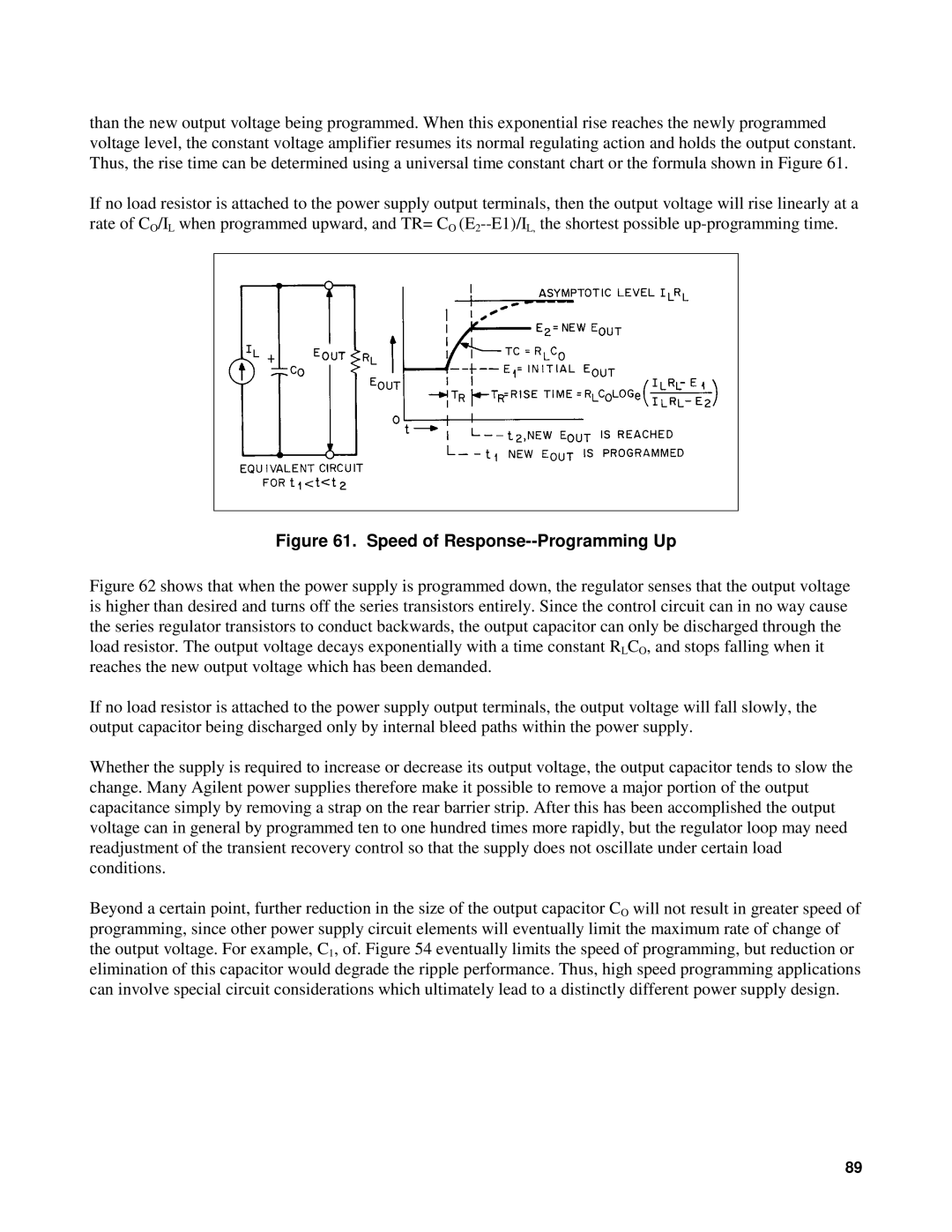
than the new output voltage being programmed. When this exponential rise reaches the newly programmed voltage level, the constant voltage amplifier resumes its normal regulating action and holds the output constant. Thus, the rise time can be determined using a universal time constant chart or the formula shown in Figure 61.
If no load resistor is attached to the power supply output terminals, then the output voltage will rise linearly at a rate of CO/IL when programmed upward, and TR= CO
Figure 61. Speed of Response--Programming Up
Figure 62 shows that when the power supply is programmed down, the regulator senses that the output voltage is higher than desired and turns off the series transistors entirely. Since the control circuit can in no way cause the series regulator transistors to conduct backwards, the output capacitor can only be discharged through the load resistor. The output voltage decays exponentially with a time constant RLCO, and stops falling when it reaches the new output voltage which has been demanded.
If no load resistor is attached to the power supply output terminals, the output voltage will fall slowly, the output capacitor being discharged only by internal bleed paths within the power supply.
Whether the supply is required to increase or decrease its output voltage, the output capacitor tends to slow the change. Many Agilent power supplies therefore make it possible to remove a major portion of the output capacitance simply by removing a strap on the rear barrier strip. After this has been accomplished the output voltage can in general by programmed ten to one hundred times more rapidly, but the regulator loop may need readjustment of the transient recovery control so that the supply does not oscillate under certain load conditions.
Beyond a certain point, further reduction in the size of the output capacitor CO will not result in greater speed of programming, since other power supply circuit elements will eventually limit the maximum rate of change of the output voltage. For example, C1, of. Figure 54 eventually limits the speed of programming, but reduction or elimination of this capacitor would degrade the ripple performance. Thus, high speed programming applications can involve special circuit considerations which ultimately lead to a distinctly different power supply design.
89
